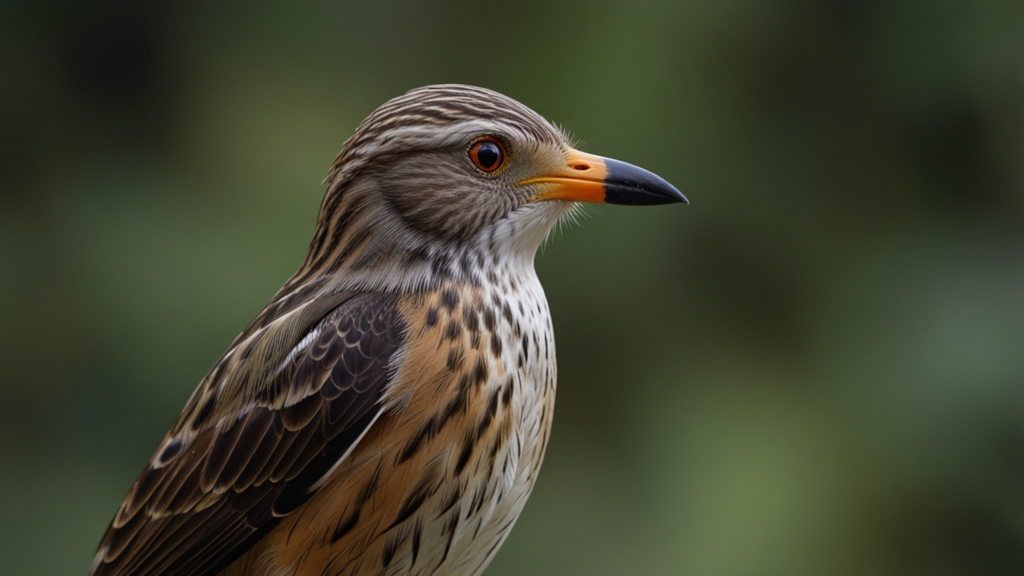Unlocking the Secrets of Bird Communication: What Are They Really Saying?
Birds have long fascinated humans with their melodic songs, intricate calls, and curious behaviors. But have you ever wondered what they’re really saying? Birds communicate for a variety of reasons, from establishing territory to attracting a mate. Their vocalizations and body language form a complex system of communication that we are only beginning to fully understand.
The Basics of Bird Communication
Bird communication is an elaborate system that includes vocalizations, visual signals, and even physical gestures. While it's tempting to anthropomorphize these behaviors, they serve specific functions within avian societies. Vocal communication in birds can be divided into two major categories: songs and calls.
Songs are typically more complex and are used primarily during mating seasons. Male birds often sing to attract females and to assert their territory against potential rivals. These songs can vary greatly between species and even among individuals of the same species.
Calls, on the other hand, are usually shorter and serve immediate functions such as signaling alarm, maintaining flock cohesion, or conveying information about food sources. Unlike songs, calls are used by both sexes and all age groups.
Understanding Birdsong
The study of birdsong is particularly fascinating due to its complexity and variability. In many species, young birds learn songs by listening to adults, a process akin to how human infants learn to speak. This learned aspect of birdsong is what makes it so intriguing to scientists. Variations in birdsong can reveal information about a bird’s geographic origin, health, and even individual identity.
Birds also have the remarkable ability to adjust their songs in response to environmental changes. For example, urban birds often sing at a higher pitch to overcome the noise pollution of city life. This adaptability showcases the sophisticated nature of avian communication.
"Birdsong is not just an aesthetic pleasure but a sophisticated mode of communication. It’s like hearing the voice of nature itself." - Dr. Jane Smith, Ornithologist
The Role of Visual and Physical Signals
While vocalizations are crucial, birds also rely heavily on visual and physical signals to communicate. Plumage color, feather displays, and even specific movements can convey a wealth of information. For example, the vibrant plumage of a peacock's tail is not only a visual feast but serves to attract potential mates and deter predators.
Courtship dances are another captivating aspect of avian communication. Birds like cranes and albatrosses perform complex dances that help to establish pair bonds and synchronize their reproductive activities. These physical displays are often accompanied by specific calls and songs, creating a multi-sensory experience.
Alarm Calls and Social Communication
Alarm calls are another vital component of bird communication. These calls can be incredibly specific, enabling birds to convey detailed information about the type and location of a threat. Some species even have different calls for aerial and terrestrial predators, allowing them to respond appropriately to different dangers.
Flock-living birds also use calls to maintain group cohesion and coordinate movements. These calls help birds to stay together during migrations, locate each other in dense foliage, and share information about food sources.
"The precision of alarm calls in birds is astonishing. It’s like having a built-in, highly specialized alert system." - Dr. Michael Johnson, Behavioral Ecologist
What We Still Don't Know
Despite significant advancements in the study of bird communication, there is still much we don’t know. The full extent of their vocal repertoire, the nuances of their calls, and the intricacies of their visual signals remain subjects of ongoing research. As technology advances, tools such as bioacoustic monitoring and high-speed cameras are likely to uncover even more secrets of avian communication.
Conclusion
Bird communication is a beautifully complex system that serves numerous essential functions. From elaborate songs to intricate dances and specific alarm calls, birds have developed a sophisticated means of conveying information. While we have made great strides in understanding these behaviors, much remains to be discovered. As we continue to unlock the secrets of bird communication, we gain not only insight into their world but also a deeper appreciation for the intricate web of life around us.
"Understanding bird communication reminds us of the profound complexities and beauties of nature, encouraging us to preserve and cherish these remarkable creatures." - Dr. Emily White, Conservation Biologist










